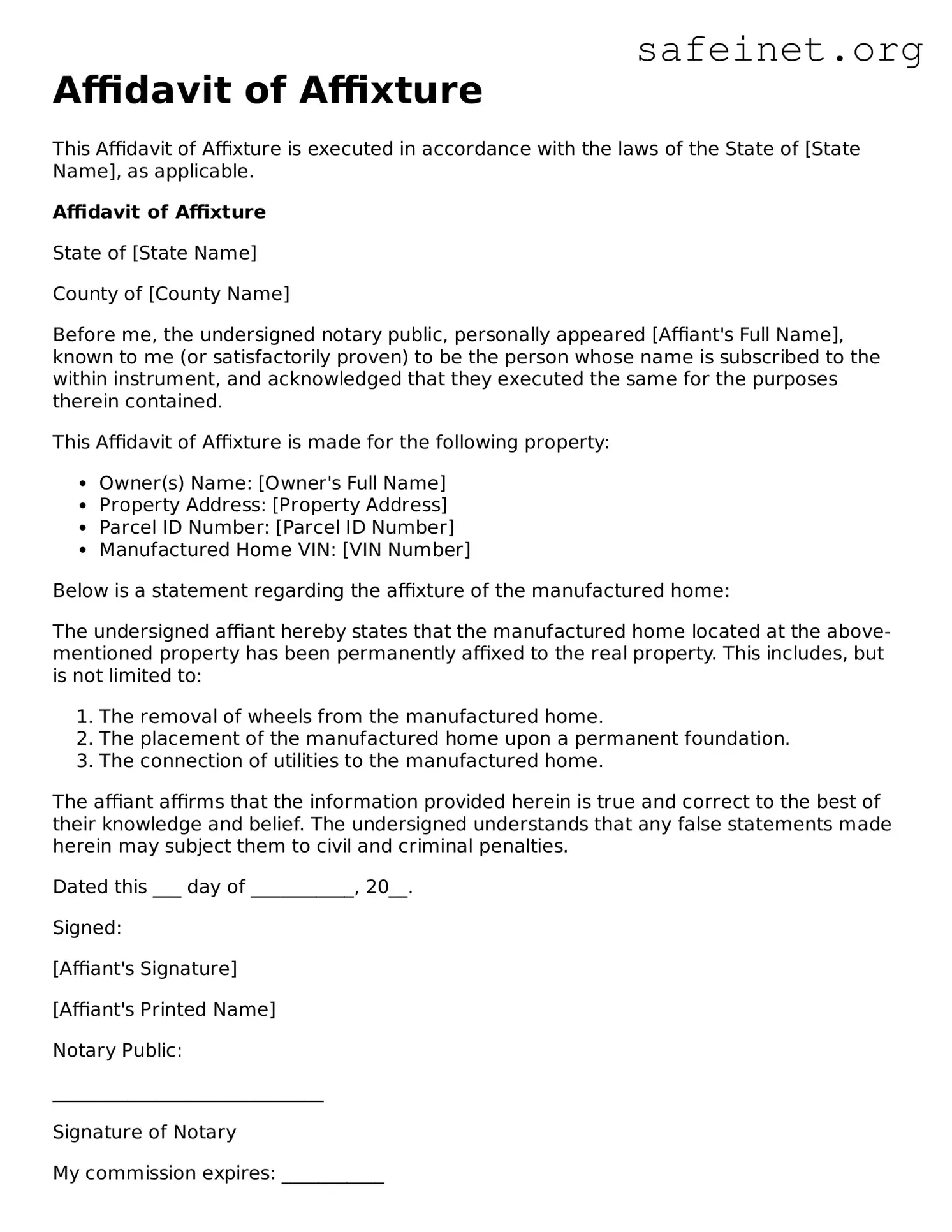Affidavit of Affixture
This Affidavit of Affixture is executed in accordance with the laws of the State of [State Name], as applicable.
Affidavit of Affixture
State of [State Name]
County of [County Name]
Before me, the undersigned notary public, personally appeared [Affiant's Full Name], known to me (or satisfactorily proven) to be the person whose name is subscribed to the within instrument, and acknowledged that they executed the same for the purposes therein contained.
This Affidavit of Affixture is made for the following property:
- Owner(s) Name: [Owner's Full Name]
- Property Address: [Property Address]
- Parcel ID Number: [Parcel ID Number]
- Manufactured Home VIN: [VIN Number]
Below is a statement regarding the affixture of the manufactured home:
The undersigned affiant hereby states that the manufactured home located at the above-mentioned property has been permanently affixed to the real property. This includes, but is not limited to:
- The removal of wheels from the manufactured home.
- The placement of the manufactured home upon a permanent foundation.
- The connection of utilities to the manufactured home.
The affiant affirms that the information provided herein is true and correct to the best of their knowledge and belief. The undersigned understands that any false statements made herein may subject them to civil and criminal penalties.
Dated this ___ day of ___________, 20__.
Signed:
[Affiant's Signature]
[Affiant's Printed Name]
Notary Public:
_____________________________
Signature of Notary
My commission expires: ___________
